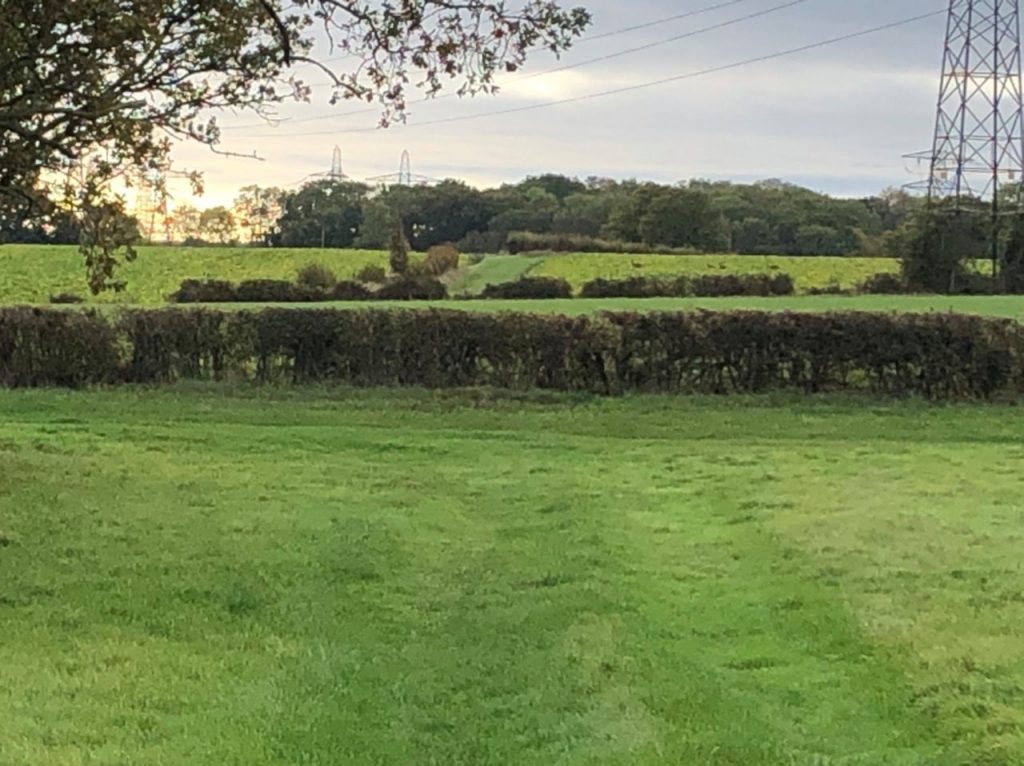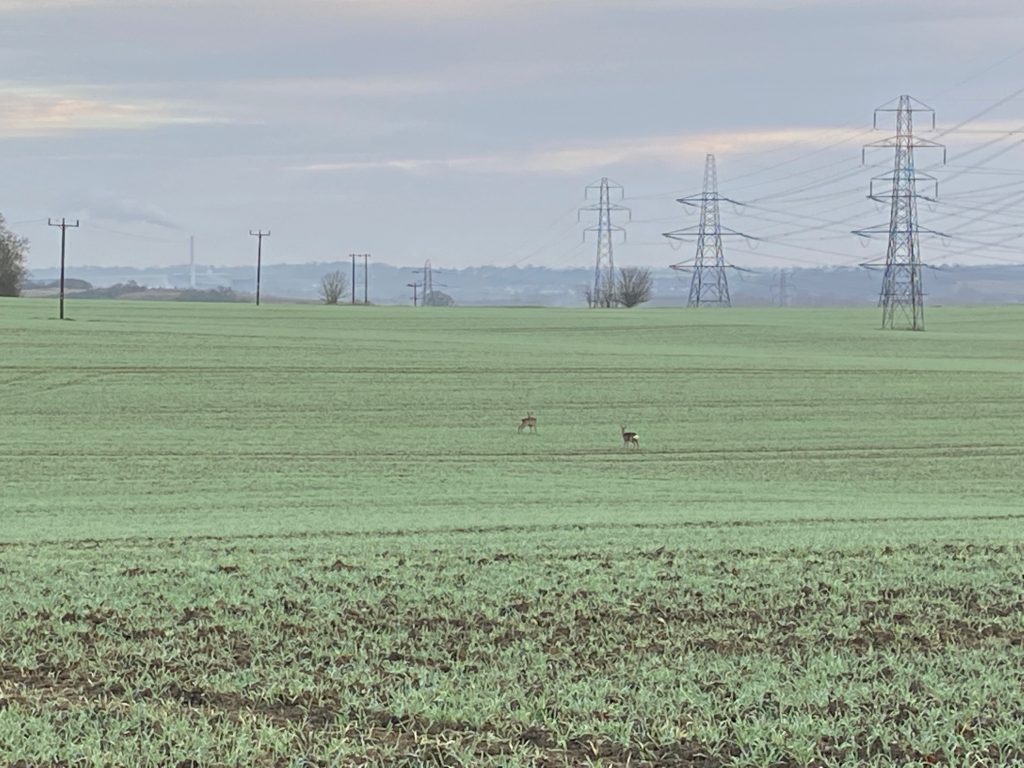There are quite a lot of deer in this part of rural Suffolk, such as muntjacs and roe deer. Some of which will come into your garden, or can even be seen crossing the grounds of Flowton Church on occasion. However most of the time, the deer are seen crossing a field or a road. Usually during the twilight and night-time hours as is typical of their behaviour.

At the moment deer, and large mammals, can freely move across the fields. The deer for example cross the open fields during the twilight and night-time hours. And they vary their paths for many reasons, such as changes in food and water availability, rutting/breeding, and hunting pressure including from natural predators such as foxes.
A family of Roe Deer crossing a field in the southern parcel of the proposed Enso Energy Solar Power Plant.
Both Enso Energy & EDF Renewables discuss deer, although briefly. During the Enso Energy public webinar the developer stated that the deer live in the woods so they won’t be impacted because we aren’t going into the woods! The Enso Energy application mentions 2.2m high anti-deer fence around the solar power plant. And EDF have mentioned a similar height of fence, though have yet to submit any form of application.
Whilst they both mention the inclusion of “mammal gates”, which are small doorways in the bottom of the fencing at regular intervals, these are only suitable for small mammals, maybe foxes. But they are not suitable for larger mammals such as deer or badgers.
There are 6 ponds within the Enso Energy site boundary. These currently provide a valuable water source for these animals. However once the fencing is in place the deer and badgers will be unable to access these water sources.

Further, Highways England estimate the number of deer related road collisions to be somewhere around 74,000. Causing 400 to 700 injuries to motorists per year. And 20 deaths.
And in the 2010 Deer Action Plan Review by Natural England it was stated that, with the Highways Agency, one it’s goals should be to reduce deer-vehicle collisions:
Wild deer are a valuable part of our natural heritage…. we need to focus our efforts on reducing deer-vehicle collisions.
Huw Irranca-Davies MP, Minister for the Marine and Natural Environment
Deer action plan review 2010 by Natural england
Giving the deer a limited number of funnelled routes (along roads and “wildlife corridors” through the development) reduces their ability to navigate and travel safely across the land in order to satisfy their various needs. If the deer are being prevented from crossing the fields, along with other large mammals such as badgers, and are having to move around the borders of the fields instead, this will not only displace their natural pathways and affect their behaviour, but this in many places will put them alongside roads. This increases the risk of deer related collisions with motorists in the area and would seem to be contrary to the goals of Natural England and the Highways Agency.
Part of the proposals by Enso Energy and EDF are for “deer and wildlife corridors”, but these aren’t the first for this area. Part of the Bramford Substation development incorporated these features into the wider design. However, as you will see from the below video, in practice these “wildlife corridors and areas” can also be a danger and a trap to the wildlife. The below video was captured by one of our followers. WARNING: Many people will find the below video distressing to watch. Though we can confirm the person filming was able to safely help the deer escape.